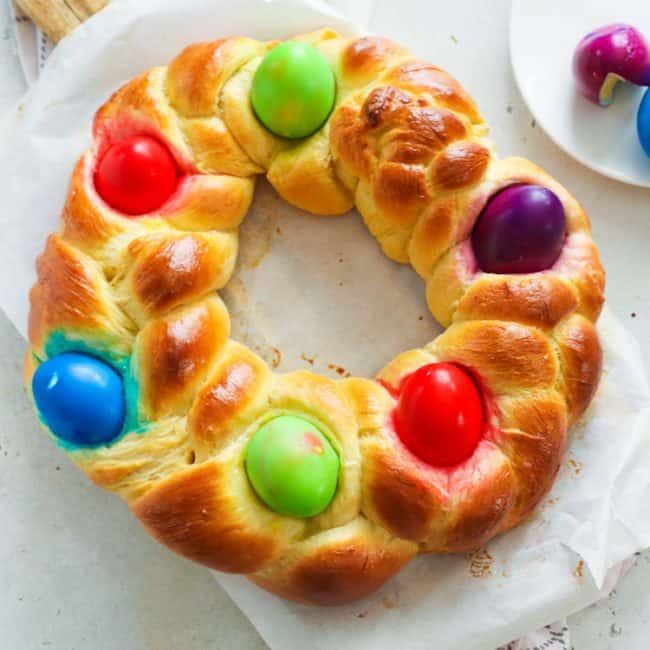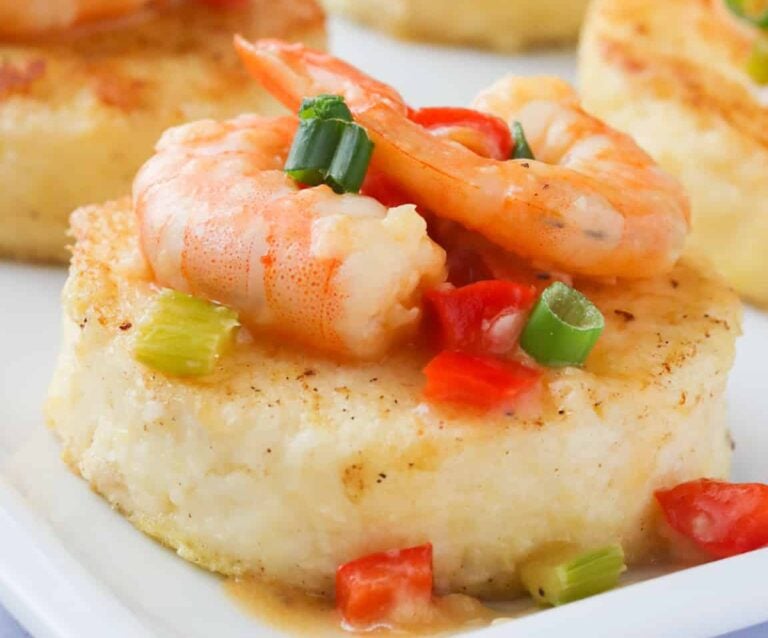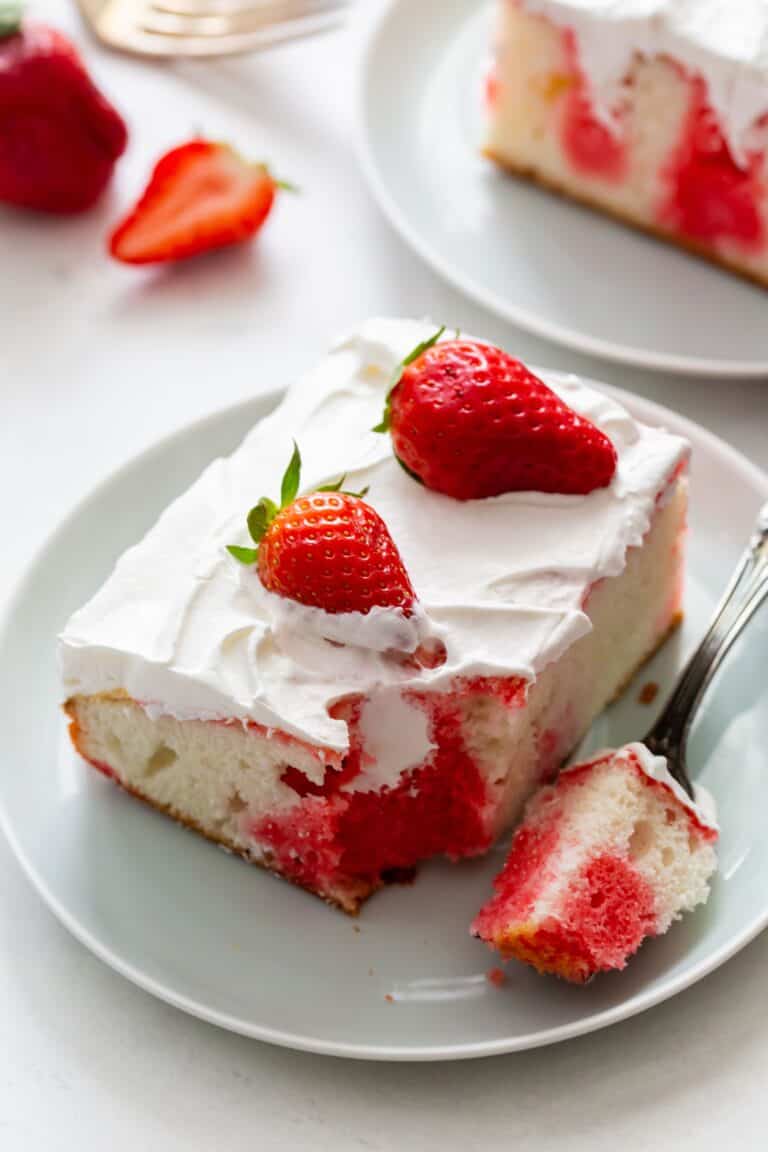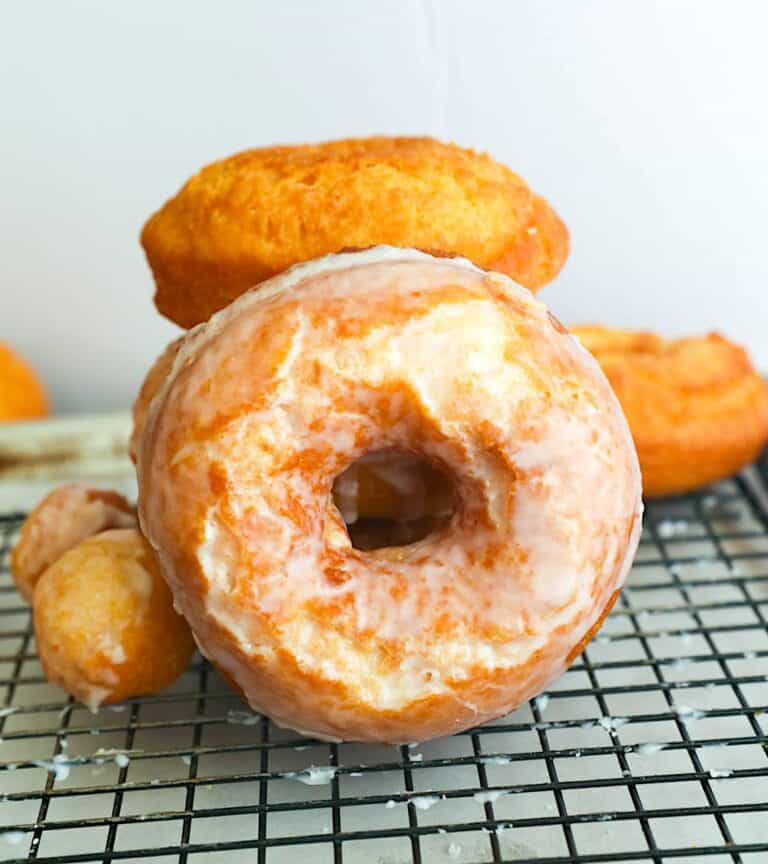Italian Easter Egg Bread
Italian Easter egg bread is soft, slightly sweet, and colorful. The kids will love making and eating this braided bread with attractive Easter-colored eggs. So rich, buttery, and versatile, you can make this fantastic bread for a family or in individually sized rolls.

The bunnies, chicks, and colorful eggs make Easter so fun for the kids. Coloring the eggs has become a family event where we laugh and spend quality time together. My family is very Catholic, and making Easter bread is our tradition.

What Is Italian Easter Egg Bread?
Italian Easter bread is a European tradition going way back to ancient Rome. This braided bread isn’t just delicious; it also conveys a symbolic meaning to Christians. Traditional Italian easter bread recipes vary by region. Common ingredients are anise seeds, candied citrus peel or orange zest, and orange juice as part of the liquid and in the glaze.
- The bread itself represents Jesus as the Bread of Life.
- The Easter bread wreath is the crown of thorns worn by Jesus, while the three-dough rope braids signify the Holy Trinity.
- As for the eggs, they symbolize Jesus’ resurrection and rebirth.
I prefer to view the wreath as God’s unending love rather than the crown of thorns. Anyway, regardless of our religion, we still enjoy this gorgeous and delicious Easter egg bread.
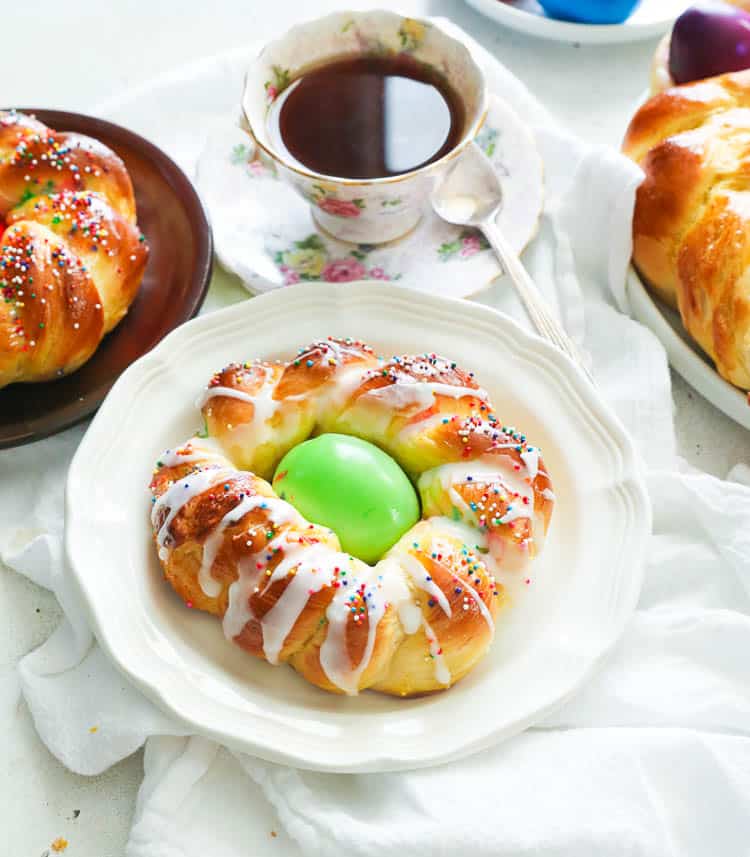
How to Make Italian Easter Egg Bread
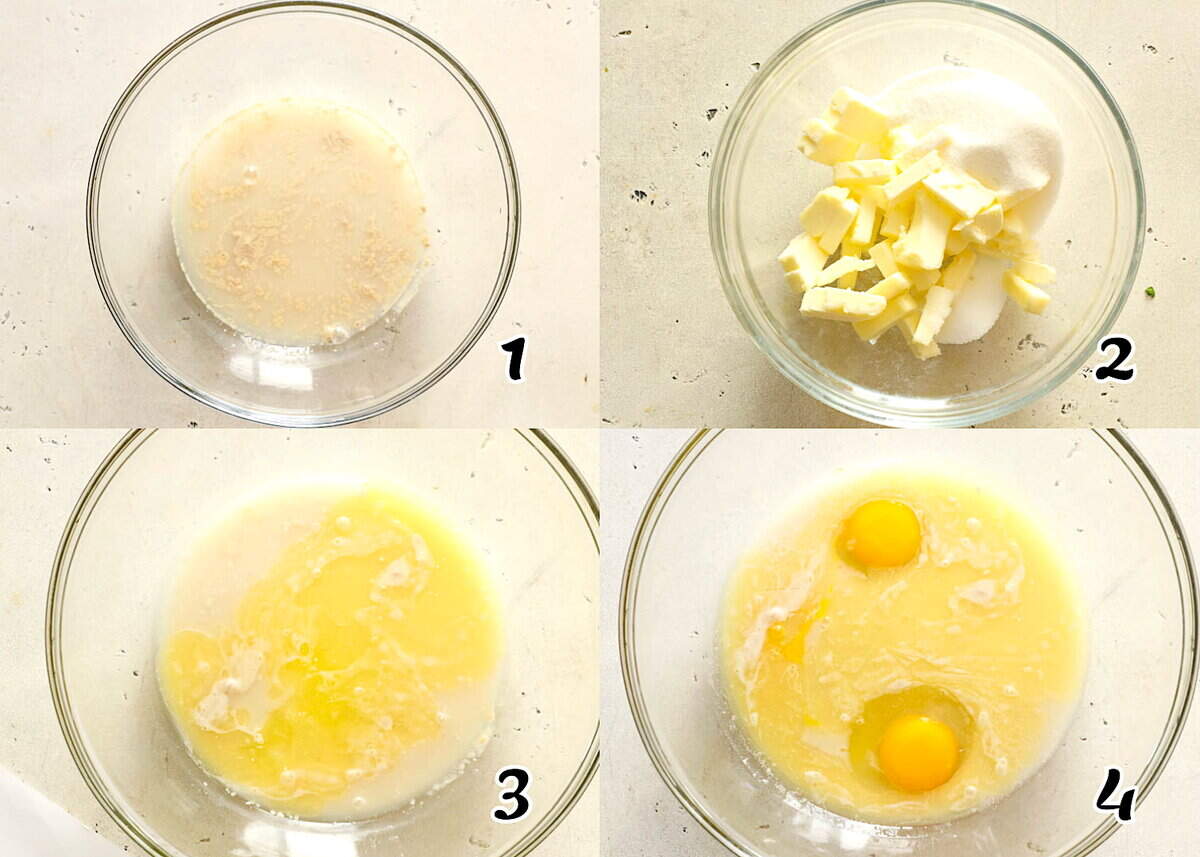
Make the Dough
- Activate yeast. Dissolve the active dry yeast in the bowl of a stand mixer for about 5 minutes. (You can also mix by hand.) (Photo 1)
- Melt. Meanwhile, in a medium microwave-safe bowl, melt the butter, sugar, and salt in the microwave for about a minute. (Photo 2)
- Stir well. The mixture should be warm, not hot. Let it cool slightly if it’s hot so you don’t curdle the eggs and kill the yeast. (Photo 3)
- Combine. Add the butter mixture to the yeast, whisk in the eggs, and mix well. (Photo 4)
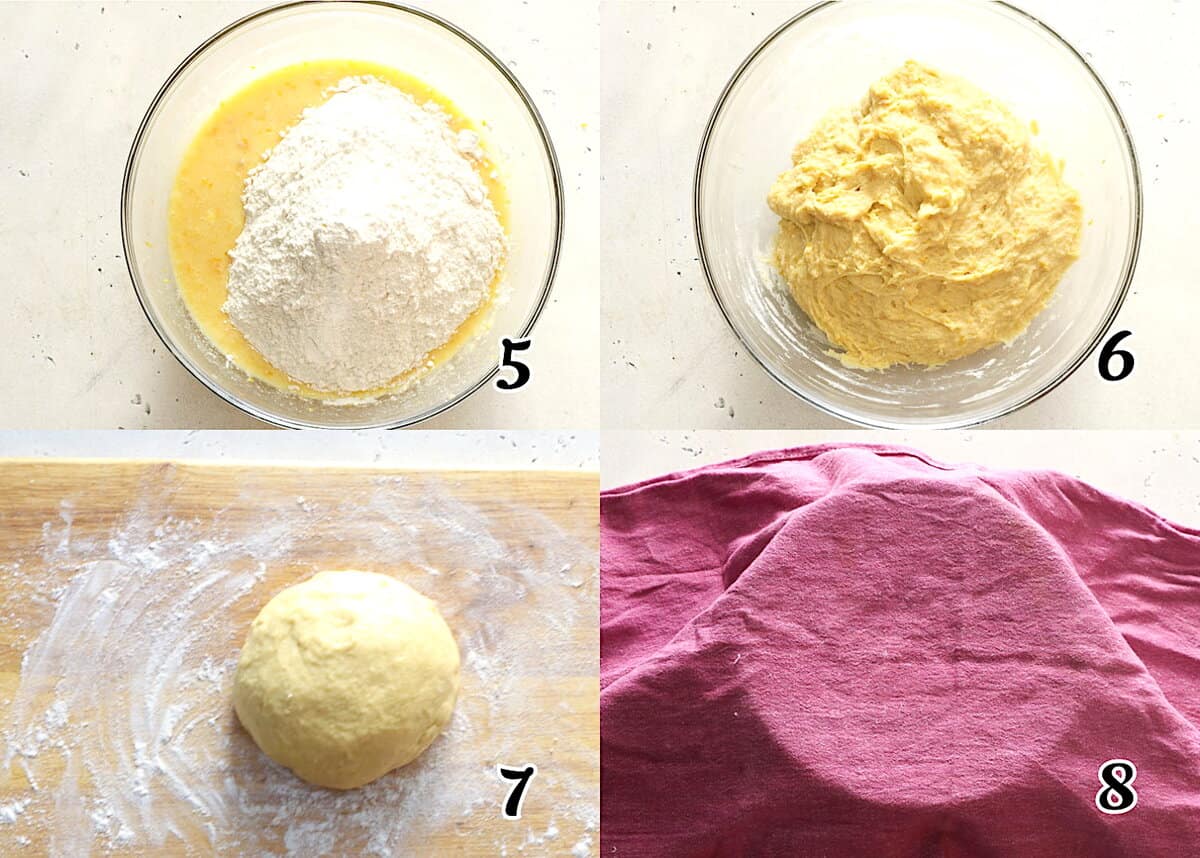
- Dry Ingredients. Add about 3 cups of flour and continue mixing with a dough hook or by hand. Add additional flour as needed for a soft dough. (Photos 5-6)
- Knead. Turn the dough on a lightly floured surface and knead for 6-7 minutes. The dough should become smooth and elastic. (Photo 7)
- Rise. Transfer the dough to a greased bowl, cover it with a damp cloth, and let it rise for 2 hours or until doubled in size. You can dye the eggs while the bread is rising. (Photo 8)
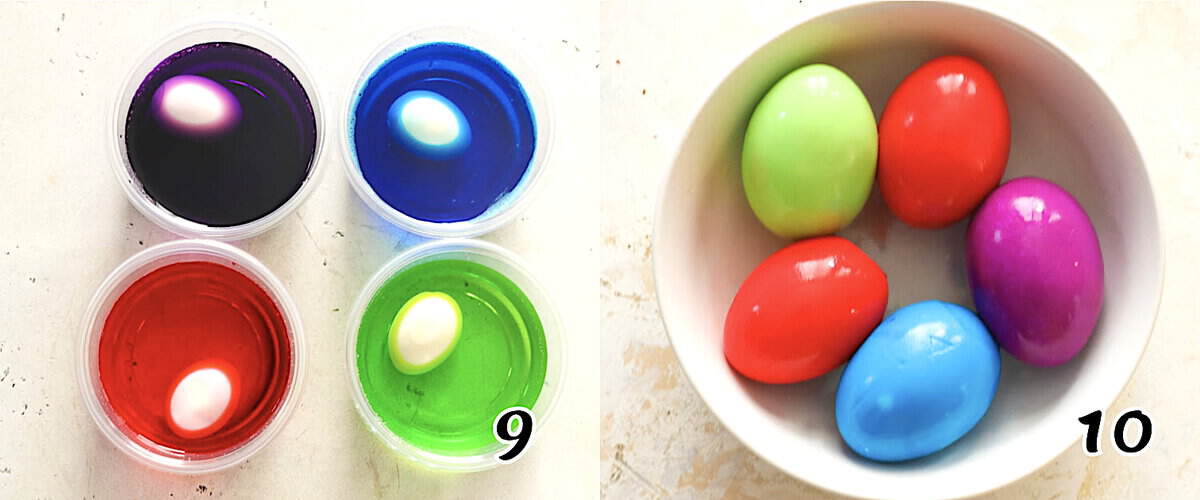
Dye the Eggs
- Water. Add 4 cups of water to a saucepan and bring to a boil. Pour ½ cup of water into 4 or more bowls, depending on how many colors you’re dying the eggs.
- Color. In each bowl, stir in 1 teaspoon of vinegar and 10-20 drops of the desired food coloring.
- Dye. Carefully place the whole eggs (either boiled or raw) in each bowl with a spoon and let them sit for about 5 minutes. After 5 minutes have passed, remove the eggs from the dye with a slotted spoon and place them on a cookie rack to dry. Set aside until ready to braid the bread. (Photos 9-10)
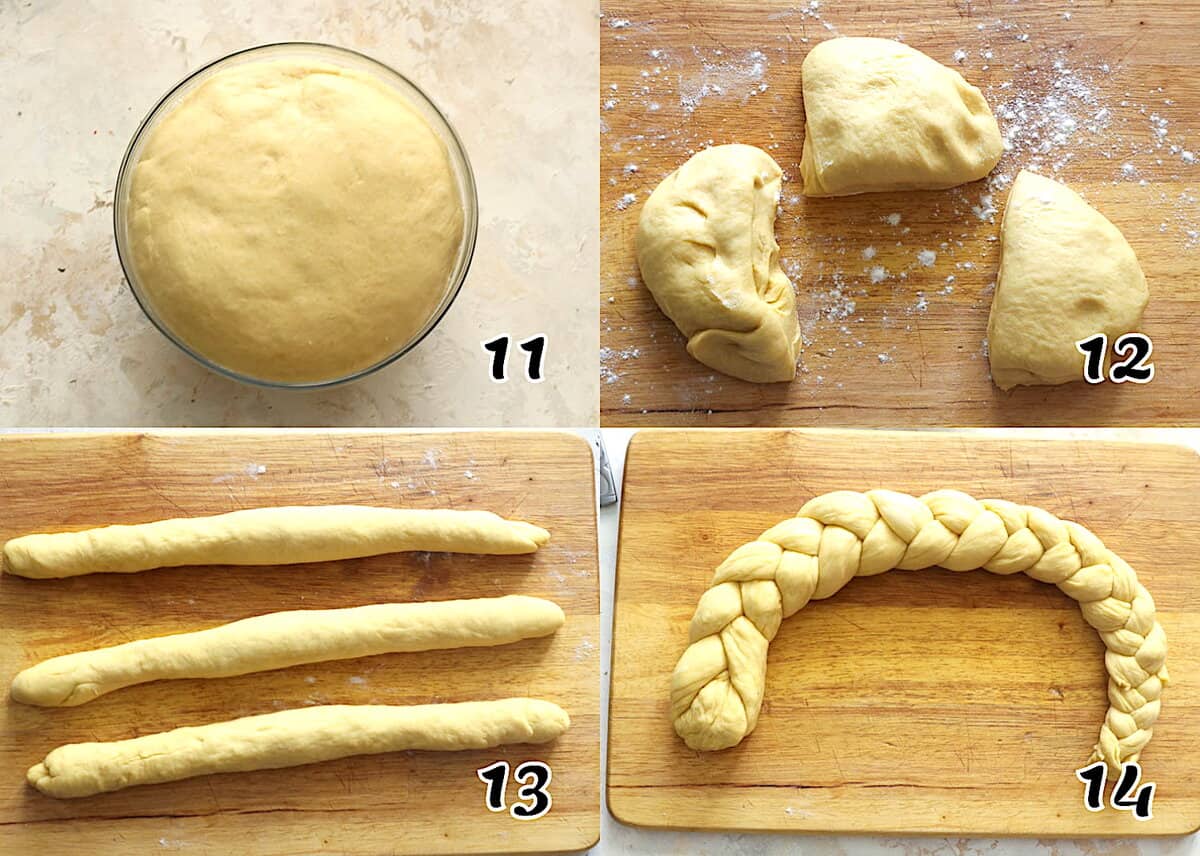
For the Braided Wreath
- Knead. Once the dough has doubled, punch it down (Photo 11). Turn it out onto a lightly floured surface and knead to remove air bubbles.
- Divide the dough for either individual or Easter bread. For one loaf, divide it into three portions. If making individual rolls, divide it into about 6 portions, then divide each into half. (Photo 12)
- Stretch or roll out each doughball into long ropes approximately 16 inches long with tapered ends. Braid the strands loosely so you can form pockets to easily tuck the eggs. (Photo 13)
- Braid. Lay the three ropes together and pinch the tops together. Cross the left strand over the middle one, then take the right and cross it over the middle one. Repeat until the bread is completely braided, and tightly pinch to seal the end. (Photo 14)
- Shape the dough into a ring and gently seal the ends of the ring together. Tuck in the eggs. Loosely cover with plastic wrap or a kitchen towel. Let it rise in a warm, draft-free area until doubled in size, 20-30 minutes. (Photo 17)
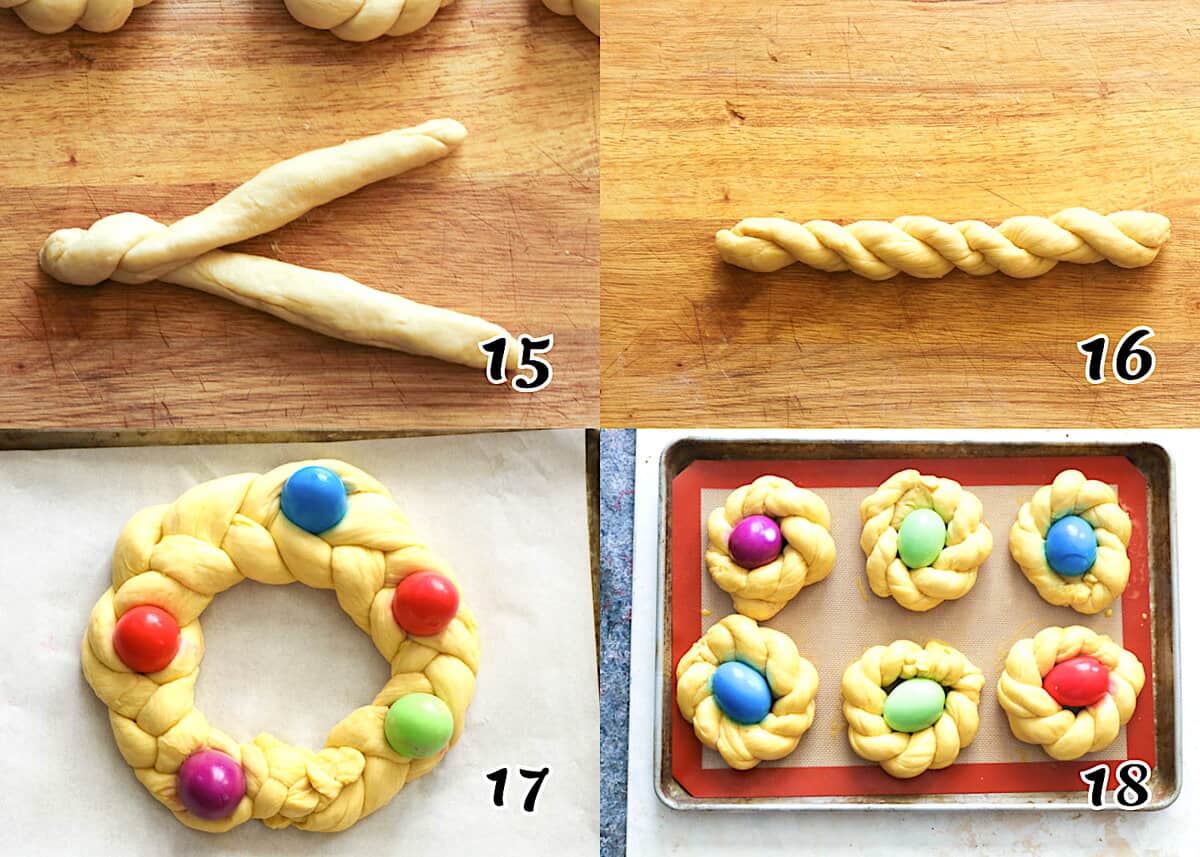
Individual Easter Egg Bread Rolls
- For individual rolls, divide the dough into 6-7 evenly-sized pieces, then divide each ball in half. Stretch each strand into ropes 14-15 inches long. Pinch the two strands together and twist them together. (Photos 15-16)
- Circle. Bring them together to form a circle, leaving enough space in the middle to tuck an egg into. Pinch the ends together and repeat the process with the remaining dough.
- Eggs. Line a cookie sheet with parchment paper and transfer the rolls to the pan. Tuck an Easter egg in each one. Loosely cover and let them rise in a warm, draft-free area until doubled in size (20–30 minutes). (Photo 18)
Bake
- Preheat the oven to 350℉ (180℃). Gently brush the bread or rolls with the egg wash, carefully avoiding the dyed eggs. Add sprinkles if desired. Bake the bread for 30-40 minutes and the rolls for 25-30 minutes (until golden brown and sound hollow when tapped).
- Glaze. Mix the powdered sugar, vanilla extract, and milk well to make the icing. Remove the bread or rolls from the oven, let them cool, and drizzle them with the icing.
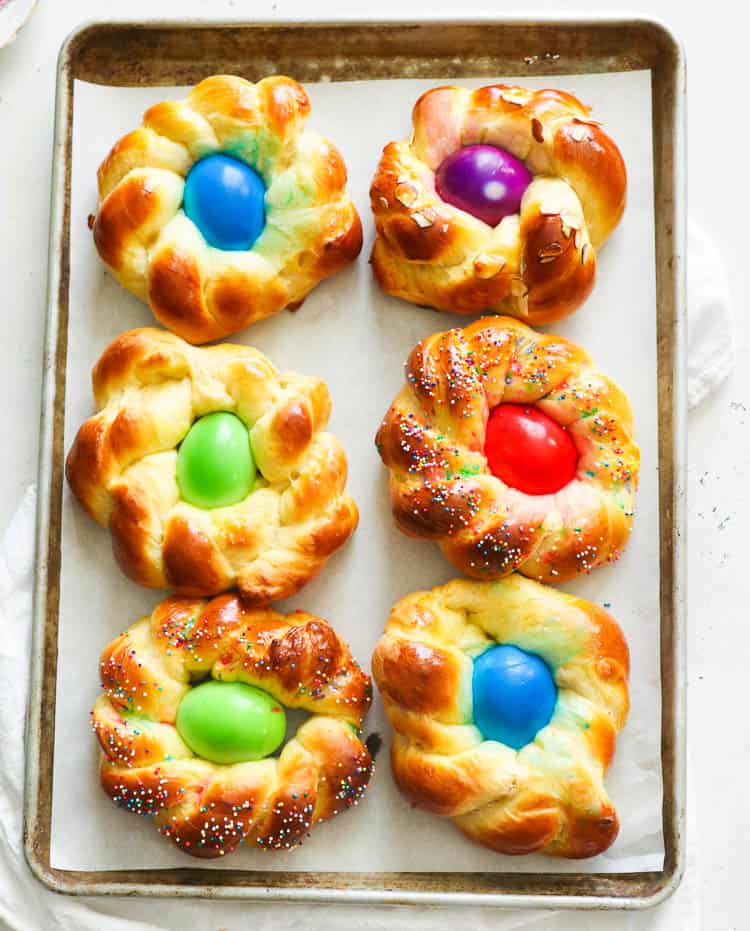
Recipe Tips
- To avoid chemical food coloring, make your own natural dyes with ordinary pantry staples like vegetables, condiments, and spices. Yellow—Boil ½ tablespoon turmeric powder and ½ tablespoon vinegar in enough water to cover the eggs. Red-orange—Boil 4 tablespoons of paprika and ½ tablespoon vinegar in enough water to cover the eggs.
- Clean the eggs thoroughly before soaking them in newly made dyes. Refrigerate overnight for more vibrant color results.
- Experiment with fruits, veggies, and spices like carrots, annatto seeds, grape juice, and blueberries for natural colors.
- Since the eggs are still in their shell, you can dye them raw, and they’ll cook while the bread is baking. I prefer to use boiled eggs to avoid a mess if they happen to crack in the oven.
Storage and Make-Ahead Instructions
Make and braid the dough the day before. Place it on a baking pan, cover it with greased plastic wrap, and refrigerate it overnight. Take it from the fridge and let it sit at room temperature for 60 minutes. Bake as usual.
Store leftover Easter egg bread in an airtight container or cling wrap in the fridge for up to a week. To keep it at room temperature, remove the boiled eggs and keep the bread in a bread box for 2-3 days. It will last 2-3 months in the freezer.
More Mouthwatering Bread Recipes You’ll Love
By Imma
This blog post was originally published in March 2021 and has been updated with additional tips, new photos, and a video

